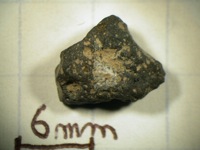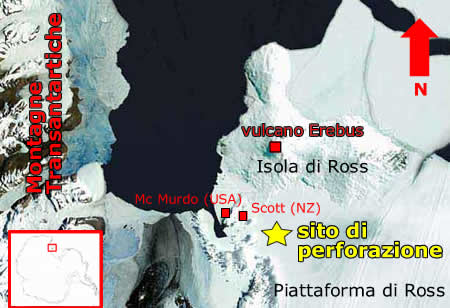Lawrence Krissek (Ohio State University – Ohio – USA)
Franco Talarico (Università degli Studi di Siena – ITA)
Gavin Dunbar (Victoria University of Wellington – Nuova Zelanda)
Ellen Cowan (Appalachian State University – Boone – N.Carolina – USA)
Thom Wilch (Albion College – Albion – Minnesota – USA)
The Sedimentology group, along with the Micropaleontology one is the most numerous group of researchers, and is one of the disciplines that are most involved in the project.
What’s analysed?
Viene analizzato il deposito, l’insieme dei materiali deposti, e ogni singolo strato (unità di deposizione).
Which analyses are carried out?
Of interest are the macroscopic characteristics of each layer, such as colour and texture (the % composition of each clast size category), as well as the sequential pattern of the layers, deposit succession and any potential reactions between the units of deposition.
 On the coarsest clasts (2 mm or coarser) the following analyses are carried out: the total number of clasts per depth interval (10 cm intervals), size (pebbles from 2mm to 64mm, cobbles from 64mm to 256mm, boulders from 256mm to 4096mm), main origin (terrigenous, volcanic, biogenic), and their shape (round, subround, angular). Moreover, each one is catalogued and photographed one by one (see on the right); the 1,200m core that will be extracted in the ANDRILL project is expected to number about 35,000.
On the coarsest clasts (2 mm or coarser) the following analyses are carried out: the total number of clasts per depth interval (10 cm intervals), size (pebbles from 2mm to 64mm, cobbles from 64mm to 256mm, boulders from 256mm to 4096mm), main origin (terrigenous, volcanic, biogenic), and their shape (round, subround, angular). Moreover, each one is catalogued and photographed one by one (see on the right); the 1,200m core that will be extracted in the ANDRILL project is expected to number about 35,000.
The Sedimentologists’ work is then carried out in close connection with research groups that supply additional essential information; the Petrology research group for example provides important information on the mineral composition of the clasts.
How are the analyses carried out? (See photogallery 7)
The Sedimentologists, together with the Micropaleontologists, are among the very first people to observe the cores after their extraction and arrival at the laboratory. They begin with an overall macroscopic analysis whereby each single layer belonging to the core is meticulously described in fine detail and its characteristics annotated in a purposely-kept register. These data are then digitalized (as for ANDRILL). The work is carried out as a group, and it may take hours to form the final description of a layer of a few cm.
Occasionally, a microscope is employed to look for elements that may provide a preliminary, rapid, and more precise characterisation.
What is found out?
The sediment data provide information not only on the clasts’ origin, but also on type, mode, and duration of the forces that were exerted on them.
It is also possible to reconstruct the direction of flow of the forces that transported them; these forces are the glaciers in ANDRILL’s case. Let us give a REAL EXAMPLE by referring to an issue needing solving during this research project.
Two glaciers (Skeleton and Mulock) direct the ice flow towards the drilling site. In the valleys spanned by the glaciers, special rocks called schists (very deformed rocks) are found which are unique to the area

Based on the presence or absence of these rocks among the pebbles found in the cores, it is possible to reconstruct past glacier flow lines. Reconstruction of the glacier’s past course is fundamental as it allows us to gain a deeper understanding of the dynamics of the area’s ice.